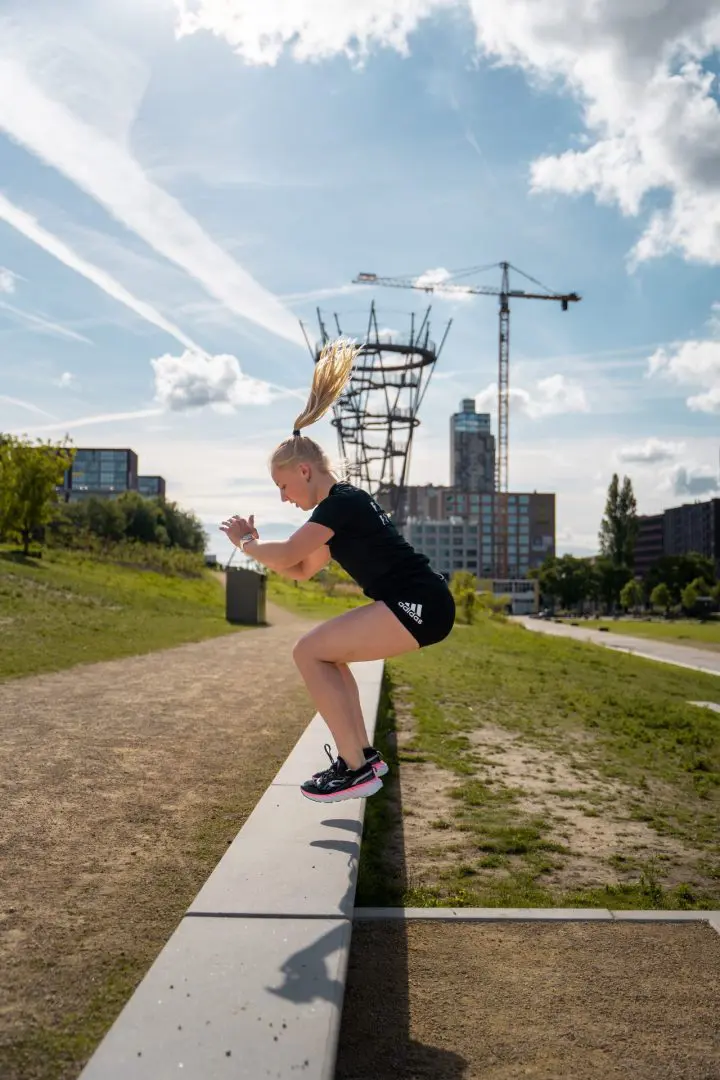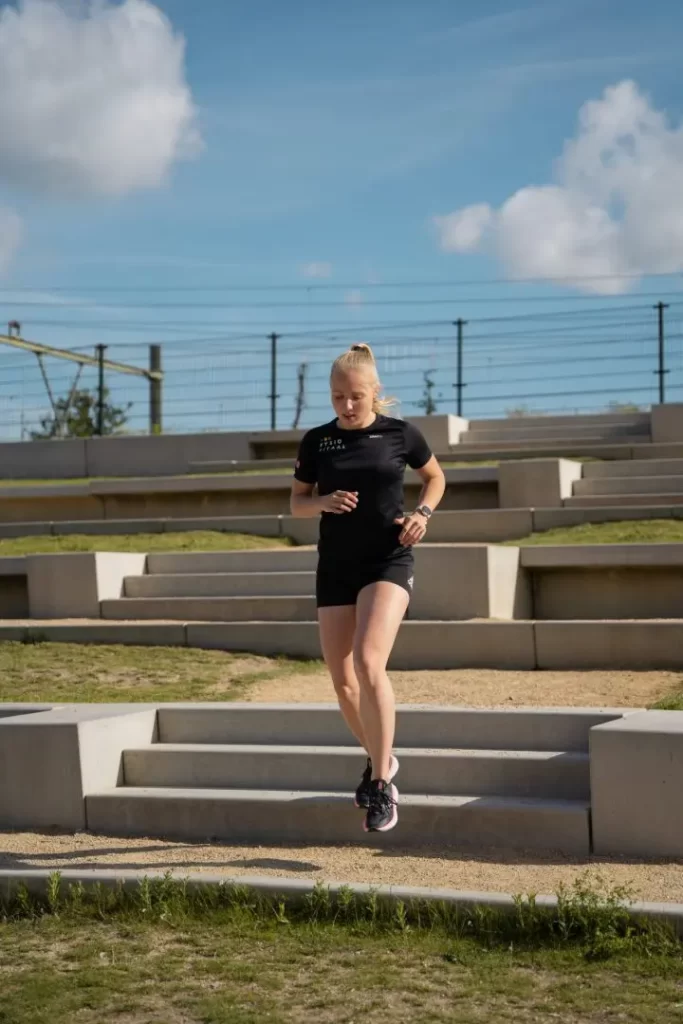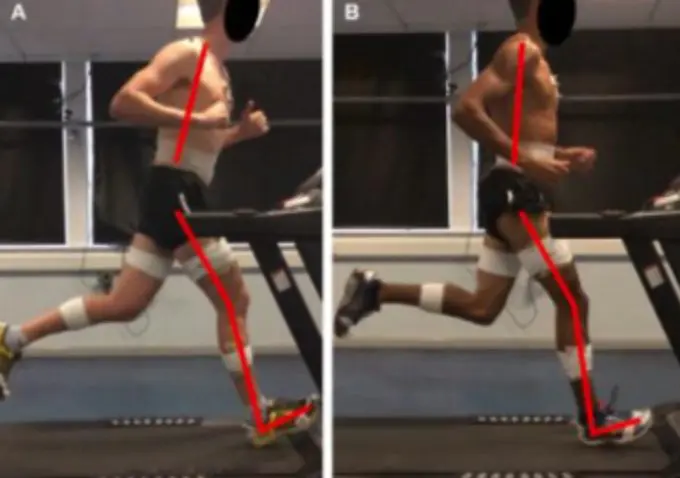Starting to run. What to do and what not to do.
You want to start running, super intention! But what are the do's and dont's for the novice runners among us? When you type ''starting to run'' on the internet, you are bombarded with different opinions and it is sometimes difficult to see the wood for the trees. In this blog, Team Fysio Fitaal explains to you what is actually important when starting to run. Whether you are running alongside your rehabilitation or as a recreational athlete, we would like to share some great running tips that can give you a flying start when running.

Starting running, how to build up with workouts?
Our bodies always need some time to adapt to changing conditions. This is why it is important not to rush when it comes to running. After all, we don't want you to run into overuse complaints after a while. Therefore, make sure you take a good dose and enough recovery time between workouts. For many novice runners, it is difficult to find the right balance between training and recovery, which makes overtraining a possibility. It is therefore advisable to plan by means of a training schedule. This way, you will always have a clear thread in your build-up and, depending on how things go, you can dabble in this. We advise you, as a beginning runner, to start by following a 5 km build-up schedule. This schedule may not be so conditionally challenging (especially at the start), but the tissues in our body need this dosed build-up to adapt to the load placed on them.

Running shoes
Planning to pull out your old running shoes to start running again? Leave them there for now. After all, you shouldn't want to use these for sport anymore. Even though you may not have used the shoes very often, they are no longer suitable for running. This is because shoes lose cushioning over time, whether you use them or not. This is because the rubber underneath the shoe dries out. So are your shoes already a few years old? Then we advise you to buy a pair of new ones anyway. That way, you can start working fresh towards your new goal and the quality of the material will certainly not become the limiting factor. Regardless of how long ago the shoe was produced, manufacturers also recommend renewing your footwear every 800-1000 kilometres.
Running wear
Besides good running shoes, appropriate running clothes are also important for a good and responsible workout. Running shoes, well-fitting running clothes are essential for a good workout. Of course, this starts with clothes you feel comfortable in. Some people hoist themselves in real running clothes, while others may feel comfortable in clothes that were still in the closet. This is totally fine by us. Just keep in mind that weather conditions in the Netherlands are quite variable seasonally. Therefore, make sure you can be adequately dressed in all weather conditions. If you would like to score a new running outfit, this is possible in all segments. You can choose from well-known brands such as Nike and adidas, but shops like Decathlon or even H&M also have excellent running clothes. For female readers, it is also advisable to purchase a good sports bra. For instance, during running, there is a lot of pressure on the body due to continuous pushing off and landing. For women with a larger cup size, a bad sports bra lead can be perceived as uncomfortable. Therefore, make sure you buy a well-fitting sports bra that offers sufficient support.
The pitfall of wanting to start too soon
Many novice runners are very fanatical. Enthusiastic to start again and keen to put down good results. Sure, we are happy if you are enthusiastic about sport, but it is not a very realistic picture of a good start. Sure, it has advantages if your basic fitness is already somewhat in order, but running a top pace is not where you should want your focus to be at the start. Other common pitfalls are not dosing training properly. This could mean too much intensity, frequency or duration of training or not enough rest time between workouts. A pitfall that increases your risk of injury, and of course we don't want that. Examples of running injuries that occur regularly are Jumpers knee and Achilles tendinopathy.
Pain as a messenger
Pain is an indicator that tells our body that something is detected in the body that is not as it should be. It is actually an alarm signal with the aim of protecting you from possible injury. Now it may not be the case that you will suffer direct injury in this case, but of course our body does not know how to make that distinction. However, it is important to distinguish between different forms of pain. You may experience pain as stabbing or nagging, but of course we also call muscle pain pain. So if you experience pain during or after running, it is advisable to check which form of pain you think you are experiencing. It is also good to think back to explain what might have caused the pain. Do you find it difficult to explain your pain or does its intensity increase over time? Then it is advisable to approach a physiotherapist to discuss what you can best do. Often, the solution is not to stop walking completely, but possibly to adjust the intensity and/or frequency. Above all, don't wait too long, it's a shame if an injury gets in the way of your goal!

Fuel in the engine
Our bodies function on fuel, just like your car. Everything revolves around energy. During all physical processes, we consume energy, so for every energy that goes out, something has to go back in. When you exercise intensively, you demand more from your body, so the engine has to work harder. Nutrients are needed for activity, but also for recovery. So if you make sure you have enough fuel in the tank, you will be able to perform better during sporting efforts. Obviously, we do not want to put you on a special diet. However, we do want to give you the tip to evaluate how your diet is currently designed and whether it is appropriate to what you ask of the body. You may already be able to make steps towards a more balanced diet with a few small adjustments. Besides nutrition, sleep is also important for recovery. Sufficient sleep is essential to recover both physically and mentally from everything we do during the day (including sports). In addition, it is known that people who sleep too little for long periods have increased cortisol (=stress hormone), which in turn has a negative effect on tissue recovery. The more cortisol, the more unfavourable to tissue repair and therefore negatively affects your sports performance.
A study by H. Koschwanez (2015) showed that in people who experience high levels of stress, there is a lower amount of white blood cells present in the body, which play an important role in recovery.
In summary; Ensure adequate nutrition and a balanced pattern, reduce stress as far as necessary and possible and ensure a good sleep pattern (preferably 7-8 hours per night).
Running with a heart rate monitor
As a beginner runner, it is advisable to run with a heart rate monitor. To know whether you are training with a high or low heart rate, you first need to know what your maximum heart rate is. Therefore, do not always try to train in a high heart rate zone, but also try to train in lower zones (heart rate zones)
running. In fact, you will get faster from gentle workouts, which will eventually push your anaerobic threshold (lactate threshold).
Body posture
Running technique and body posture affect the efficiency of your running. Many novice runners tend to look short ahead, causing the upper body to bend forward a little. So they run a little forward, so to speak. We know from sports and posture analyses that runners who run more upright perform better. So as a result, we say that an extended pattern is also more effective and energy efficient. This way, you ensure that you are using all the energy you generate in the best possible way and not letting it disappear into the ground. We will go into this in much more detail in a later blog.

The true nature of a warm-up and a cool-down
Many people prefer to skip a proper warm-up and cool-down. This is because people often want to 'just quickly' go for a run and the warming-up/cooling-down then only takes extra time. It is not so much that you actually get 'warmer' during a warm-up, but it is physiologically beneficial to warm up your muscles and tendons. This is because a warm-up aims to prepare the tissues for the load that will be asked of them during your workout. For example, gentle walking or jogging can be enough for a good start. Also opt for some different dynamic exercises. Dynamic running training can ensure that your body is once again 'warmed up' and already gently 'booted up'. We will return to this subject in more detail later on.
